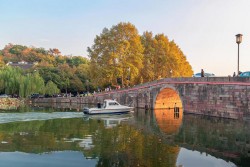

Introducing Lingyin Temple
Lingyin Temple is a renowned Buddhist temple located in Hangzhou. Lingyin Temple has a history dating back over 1,600 years. Nestled at the foot of lush hills and surrounded by picturesque natural beauty, Lingyin Temple offers a serene and spiritual atmosphere for visitors.
Lingyin Temple Fast Facts
• Chinese Name: Ling Yin Si 灵隐寺
• Best Time to Visit: April, May, Sept & October
• Recommended Visiting Hours: About 1 to 2 hours
• Type: Buddhism, garden
• Opening Hours: 6:30 to 17:30 (Nov – Apr); 6:30 to 18:00 (May – Oct)
• Entrance Fee: CNY30
• Address: No.1 Fayun Alley, Lingyin Road, Xihu District, Hangzhou, Zhejiang Province
History of Lingyin Temple
What to expect at Lingyin Temple
How to get to Lingyin Temple
• Take bus No. K7 or Y2 and get off at Lingyin Station.
• Take bus No 103, 121 or 324, and get off at Lingyin Dong Station.
• Rent a car/bus from GGC to enjoy a hassle free private transfer from hotels in Hangzhou to Lingyin Temple.
Additional travel advice on Lingyin Temple
• Lingyin Temple is within the Peak Flown From Afar scenic area. Admission ticket to Peak Flown From Afar is a must to visit the temple.
• Vistors can have vegetarian meals at the restaurant of the temple at a reasonable price.